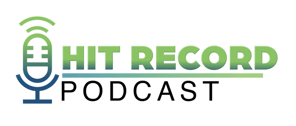Episode 17 - Driving More Mission-Driven Community Impacts for Your FI


Don't Miss An Episode, Subscribe Now

Podcast Episode 17: The FI GROW team discusses what's currently trending when it comes to mission-driven policies for community banks and credit unions. Here are some effective ways to better define your financial institution's mission and how to make sure you're proactively abiding by your mission!
Transcription:
Have you ever been talking about something that's really useful and thought, "That's a great idea, let's hit record so we can share this with everyone?” If you're looking for best practices for your bank or credit union, join us while we talk all things sales, marketing, and strategy for financial institutions. Let's make it happen with FI GROW Solutions.
Meredith Olmstead:
Hi there, I'm Meredith Olmstead, the CEO and founder of FI GROW Solutions. We are a marketing agency that works exclusively with financial institutions. And I'm here with our chief of strategy, Penne VanderBush. Say, hi, Penne.
Penne VanderBush:
Hi there. Hello.
Meredith Olmstead:
And we have just been having some really interesting conversations around mission driven banking policies. It sounds kind of weird, but I really want to talk. I felt like we should be hitting record on this and talking about it a little bit more because we're really seeing a lot of policies and missions that are all over the place. And that aren't really well aligned or focused in one, or two or three really clear directions for an institution.
Meredith Olmstead:
We work with a lot of banks and credit unions. A lot of community banks and credit unions, who do a tremendous amount for their broader communities. And obviously these institutions are made up of staff and customers, who are out there everyday making a difference in people's lives. And I think it's really really important to try to capture some of those efforts in your larger approach to how you're running your financial institution.
Meredith Olmstead:
So, we wanted to talk about that a little bit in terms of defining a mission and making sure that your institution is really living up to that mission, whatever it is that you have come up with.
Penne VanderBush:
Yeah, absolutely. And, this lends to kind of where we started this conversation before we hit record was too many institutions are trying to be all things to all people. And they're spreading their donation dollars, their volunteer time, their staff members so thin that when we look back at a year past, while it might feel rewarding to say we participated in a hundred events, or we donated X dollars to all of these things.
Penne VanderBush:
When we start to look at those things individually or in buckets the impact is actually really small. Because, it wasn't in alignment with a larger vision or mission for that institution. So if we start with vision statements and mission statements, which, really should be serving as your guiding light around decision making, we see a lot that are product and service based or customer service based, right?
Penne VanderBush:
Like providing responsible financial solutions with a smile or with that great service. And I think we need to be more realistic as an industry. That as a bank or as a credit union, your product line is your product line.
Penne VanderBush:
That's the product or service that you bring to the marketplace. That's your job, right? That's the basis of your business. And of course people expect great customer service. We're human beings. We want to treat each other kindly. We want to be smiling.
Meredith Olmstead:
Yeah, it's a given. Yeah, it's a given.
Penne VanderBush:
So, it's a little like you're hiding a little bit behind a mission statement. That's like, we're going to bring our product to the marketplace with a smile, or we are going to offer these financial products and services and just help our community, in general, in broad strokes.
Penne VanderBush:
So we see a lot of mission statements where when we're having these strategic conversations. We're like, "what's in alignment with your mission."
Penne VanderBush:
So how do you want to be spending your donation dollars? Where do you want to be spending time volunteering or let's talk about building new products, right? If you are focused on, if your mission is clear that it's important to you to improve the environment, right. Then, then your decisions start to become easier because, well, then we should have a product for solar loans or we should have a product or a service around educating people on more efficient housing options. Right? So the types of financial advice or webinars you offer, or the way that you start to organize your messaging becomes clear and defined when you have a well defined mission and vision, as opposed to that all things for all people approach.
Meredith Olmstead:
Yeah, absolutely. And I think sometimes people get a little bit, they, they go a little too high level or they get a little bit too high in this 10,000 foot level when it comes to a mission statement and they want to include everything in it. But if you can focus your mission a little bit more, it can be more impactful to all of those policies, procedures and what your staff are spending their time on and what your institution is spending its money supporting. I think also sometimes defining a mission for your institution. It can be a little bit easier than you might think. You really just have to tap into what, or where are the priorities of your larger community, your current customer base how are they, how are they active in the giving back to the community around you?
Meredith Olmstead:
How are your staff motivated to do those kinds, that kinds of activities as well? What kinds of boards are people sitting on? What kinds of special community events are they attending? Some of those kinds of things where you really go through some activities with your, with some of your staff, with some of your executive team, maybe you survey your membership or really talk to some members as well, and start getting some feedback on where the priorities are for your, for the individuals that are already part of your institution. You might really see your mission kind of defining itself pretty easily and pretty clearly.
Penne VanderBush:
Yeah, I think when we talk to clients about mission and vision, there's almost an immediate stigma around, oh, this is going to be like a really long process. We have to start from, and we have to have all these sessions and surveys and you certainly can take that approach to some of it. But a lot of the times we do find that if we just talk to clients about what they're already doing, it can, a lot of the times just it unveils itself. And it was right there the whole time. And it just wasn't well defined. And we notice with clients who do a good job defining that mission and vision, and then making decisions around the products they offer and the services they offer and where they spend their donation, money and volunteer hours around that gives your staff and your whole institution and your membership base, a huge sense of pride in what you've accomplished.
Penne VanderBush:
If you're coastal credit union and your mission is to help reduce plastics in the ocean. And at the end of the year, you can proudly say with our members' efforts and our staff efforts, we've removed X pounds of waste from the oceans, or we help support X amount. It's something that people can understand and rally around, and there's a number behind it, and there's an impact and you made an impact and you feel that impact. And I think that's a big difference with this, all things to all people kind of approach where you try to develop, well, we need products and services for these types of people or this type of market segment, or, and it becomes so convoluted that at the end of the year, if you ask some of your frontline staff, "what did we do last year? What are you proud to say that we did last year?" You might get like, "well, we helped the community." It's a very general broad response. Cause they don't know cause it wasn't defined well enough.
Meredith Olmstead:
Yeah. And I think too, we've seen a lot of success where when you have a well defined mission and vision for an institution, you can then create giving policies and procedures and other kinds of staff policies and procedures that help support that the efforts towards achieving even small little incremental goals towards that mission. So we've done a lot where with our clients who have really kind of worked towards a specific mission, we'll develop a giving policy, a form for requesting a donation, actually ask specifically, "okay, does your special event or your community event fit under this category or this category of mission of giving?" And it has to fit in a certain category in order to even qualify to be considered for a donation.
Meredith Olmstead:
And also we see lots of great results when you're supporting staff efforts. So giving, having a paid volunteer policy, where you're giving PTO for people who are going out and working towards your mission in a broader sense, and also even lending policies internally that can help support a broader financial mission for your individual staff. So maybe subsidizing or reducing some kind of closing cost for employee members towards improved housing in an area, say it could be an example or something like that.
Penne VanderBush:
Right. I think the most painful part as we have this conversation is people will say, "well, we're leaving people out, we're leaving out a certain area of the community by further defining this." And so we talk to how you go about that process. Right now many institutions probably experience they're sitting there and their donation requests are from a Little League team and maybe arts or theaters organization. And then maybe you have something for a solar panel field build, and they're asking you to get involved. And so you kind of have all, over the place, all over the place. And, and you're trying to figure out the best way to navigate that.
Penne VanderBush:
So the online form that Meredith just mentioned is a really great way on your website. First of all, when people are saying, "Hey, could you donate to my son's little league team? Or could you donate here or there." Say "our donation, our giving policy is on our website. So just go and read it. And if your organization is in alignment, we will consider them for a donation." And that online form starts out by saying, "we strongly support our community. We just, we need to be impactful in the areas that are in alignment with our mission, their environmental housing" you name very specifically what your mission is focused on. And then you just make that ask.
Penne VanderBush:
So where, what is your donation or request in alignment with, for these things that are part of our mission. And then if you've always donated to the local Little League team, you just have a conversation and say, "we're doing a better job at defining our mission and the impact that we're having in the community. We will gladly donate to you this year and next year, but we want you to plan that going forward you'll have to look for another organization." So it's not a hard cutoff. And I think that's what people feel is if we define this, then all of the history or all these relationships that we have built are gone and it's a negative interaction. It doesn't have to be, and it opens the door for all of the new positive relationships that you're about to have that are better in alignment with that mission in that, in impact for sure.
Meredith Olmstead:
Yeah. Great conversation. Great stuff about, around mission. Please feel free to visit us to learn more about what we do for banks and credit unions on figrow.com. We would love to hear from you about how your mission is driving growth for your financial institution. So let's get out there and make it happen.








Blog comments